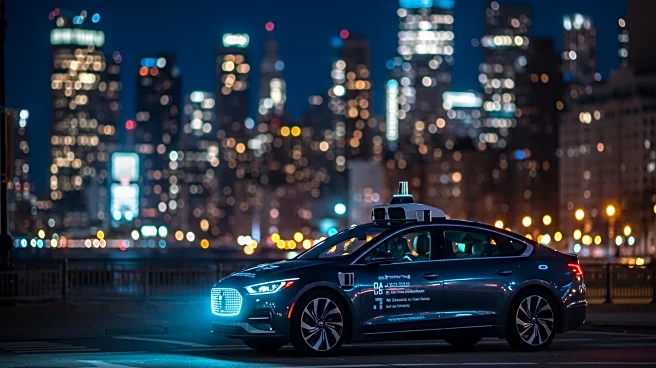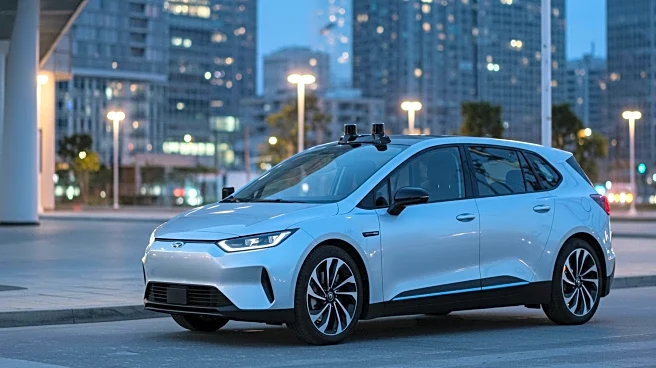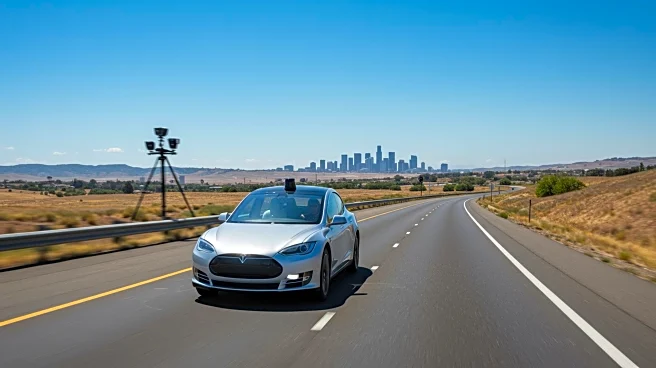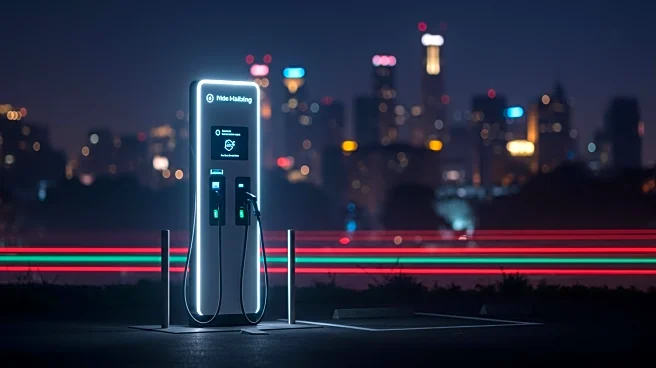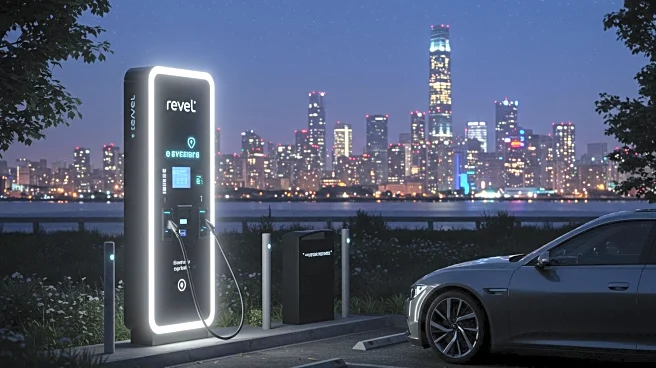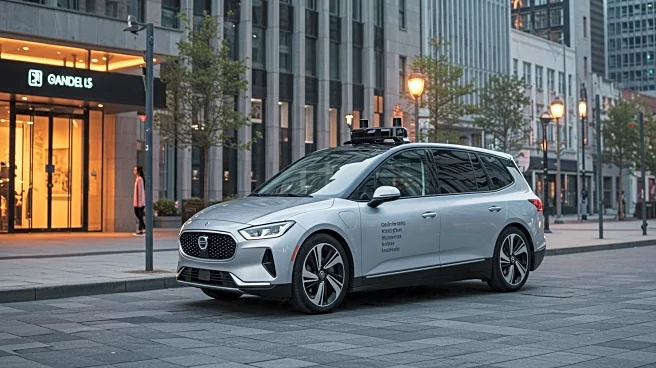What is the story about?
What's Happening?
Tesla is advancing its Full Self-Driving technology with a focus on its Robotaxi platform, which could revolutionize transportation in urban areas like New York City. The company is exploring the potential of driverless ride-hailing services, which may replace traditional yellow cabs. Tesla executives have suggested that operating a Robotaxi could generate significant passive income, potentially disrupting the current taxi industry. The Robotaxi offers several advantages, including lower operational costs, increased availability, and enhanced safety compared to human-driven vehicles. Tesla's Full Self-Driving technology has demonstrated a lower accident rate than human drivers, and the company is actively recruiting employees to support its Robotaxi operations in New York.
Why It's Important?
The introduction of Tesla's Robotaxi platform could significantly impact the transportation industry, particularly in densely populated cities like New York. By offering a cheaper and more efficient alternative to traditional taxis, Tesla's autonomous vehicles could reshape urban mobility. This shift may lead to reduced demand for taxi medallions and alter the economic landscape for taxi drivers. Additionally, Tesla's focus on sustainability aligns with New York City's green initiatives, potentially accelerating the adoption of electric vehicles and contributing to the city's carbon neutrality goals. The success of Tesla's Robotaxi could also influence public perception and acceptance of autonomous driving technology.
What's Next?
Tesla's Robotaxi platform is poised to expand, with the company seeking employees to support its operations in New York City. As the technology continues to advance, Tesla may further develop its autonomous driving capabilities, potentially leading to wider adoption in other cities. The transportation industry may need to adapt to the growing presence of autonomous vehicles, which could prompt regulatory changes and impact traditional taxi services. Tesla's success in New York could serve as a model for other urban areas, encouraging the integration of autonomous vehicles into public transportation systems.
Beyond the Headlines
The rise of autonomous vehicles like Tesla's Robotaxi raises ethical and legal questions regarding safety, liability, and employment. As driverless technology becomes more prevalent, policymakers may need to address these concerns to ensure public trust and safety. The shift towards autonomous transportation could also lead to job displacement for traditional taxi drivers, necessitating workforce retraining and support. Furthermore, the integration of autonomous vehicles into urban environments may influence city planning and infrastructure development, as cities adapt to new transportation models.
AI Generated Content
Do you find this article useful?
